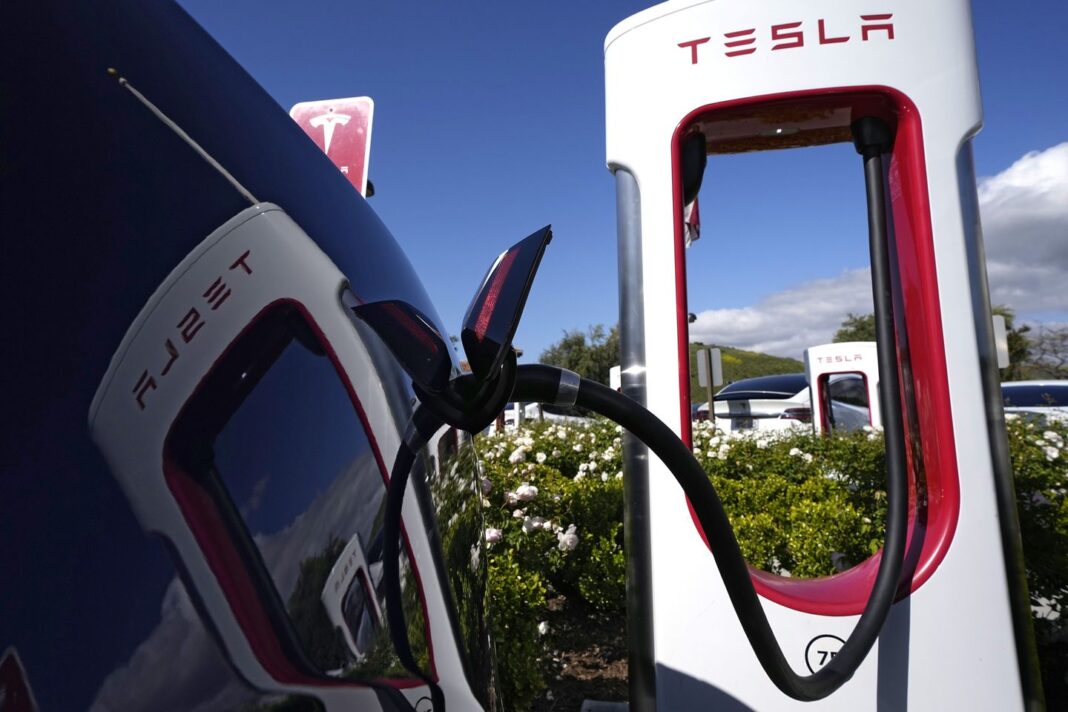The Daily Observer London Desk: Reporter- John Furner
Electric vehicles meant to help curb climate change are also some of the most susceptible to the very problem they seek to treat: extreme heat.
As the planet experiences its hottest days on record and heat waves blanket tens of millions of Americans, EV owners are advised to take steps to avoid long-term damage to the batteries powering their cars.
The warnings augment the unique challenges already facing EVs compared to traditional gas-guzzlers, including the lack of public charging stations, reliance on China for critical minerals used in batteries, electric grid reliability and high sticker prices.
The heat warnings come amid industry concerns about the feasibility of President Biden’s proposal to phase out sales of most new gas-powered cars and force automakers to sell primarily EVs by 2030.
“Just in time for [the Environmental Protection Agency’s] regulatory push on electric vehicles, this week’s heat wave in the Southwest is bad news for EVs,” Western Energy Alliance, a lobbying group for oil and natural gas, wrote on Twitter.
Industry analysts and EV automakers recommend several ways to prevent EV battery overheating during scorching weather:
• Avoid parking in the sun.
• Avoid rapid charging.
• Charge during cooler times of the day.
• Use air conditioning sparingly.
• Use AC to cool the car while still plugged in, allowing charging power to cool the battery.
• Tesla recommends keeping the battery charged between 20% and 80%.
Charging of any kind during extremely high temperatures can lead to long-term battery capacity reduction, experts warn. But if you must, avoid rapid chargers.
Kate Harrison is cofounder and head of marketing of MoveEV, an EV transition company advising employers on converting their gas-guzzling fleets to electric with the help of tax incentives. She said the benefits outweigh the inconveniences but require some adjustment.
“There’s definitely a segment of the population in general that is EV-hesitant,” she said in an interview. “EVs are just like smartphones. No one really worries about having to charge it. Charging your phone is part of your day.”
For use around town and daily commuting, Ms. Harrison said clients are won over thanks to lower lifetime costs due to savings in gas, maintenance and new tax incentives.
“It is a new technology, and it takes a bit of getting used to,” she said. “It’s not usually 108 degrees outside. Most of the time, you come home and plug in. You don’t need to use a fast charger at all, only on larger trips that need to be planned out.”
Democrats included a tax credit of up to $7,500 for new EVs in a tax-and-climate spending package Mr. Biden signed into law last year, although some may not receive the full credit based on domestic sourcing requirements for manufacturers that will become increasingly strict.
The biggest summer-heat hurdle for EV owners is their charging habits. Avoiding rapid charging and charging during certain times of the day means more planning and the likelihood that long road trips are out of the question.
Cold weather also impacts EVs by significantly limiting their range on a single charge and taking longer to reach full capacity. However, colder temperatures don’t weaken the battery long-term like extreme heat can.
As part of Mr. Biden’s green energy agenda, the EPA is proposing stringent emission reductions across automakers’ fleets. To comply, their new vehicle sales would need to be roughly 60% EV by 2030 and 67% by 2032.
But the rule, if enacted, will have to overcome legal hurdles.
Republican attorneys general in half of the states and leading trade associations tied to the transportation sector are expected to mount legal challenges that the EPA is exceeding its authority. They argue that fundamentally altering an entire sector of the economy and Americans’ way of life without congressional approval is unlawful.
“At the end of the day, when we enter into litigation, it’s not about animus,” Kentucky Attorney General Daniel Cameron recently told The Times. “It’s not about anything other than standing up for the values and interests of our state, and standing up for common sense ideals and making sure that the Biden administration plays inside the bounds, not only of our constitution but the statutory framework that’s been set up by Congress.”



